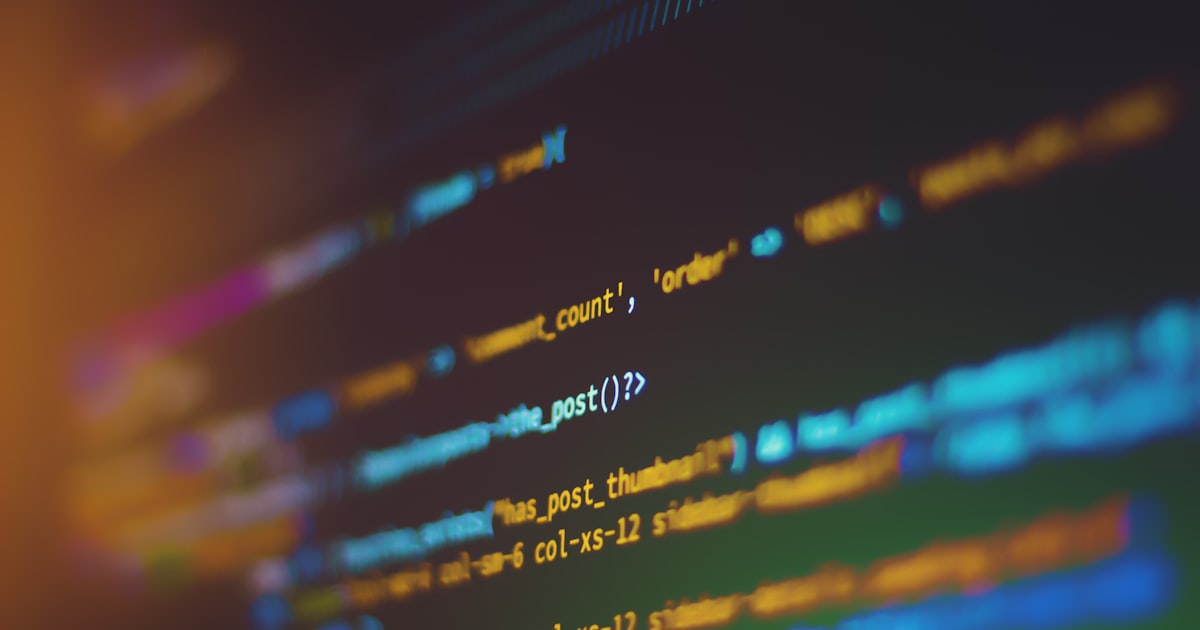
Comprehensive LLM Monitoring Strategies for Production Systems
Comprehensive LLM Monitoring Strategies for Production Systems
Large Language Models (LLMs) have transformed how businesses interact with AI, but their complexity and scale introduce unique monitoring challenges. Unlike traditional ML models, LLMs require specialized observability strategies to ensure reliability, safety, and cost-effectiveness in production environments.
Why LLM Monitoring is Different
Traditional ML monitoring focuses on accuracy metrics and data drift. LLM monitoring must address additional dimensions:
- Token Economics: Cost per request varies dramatically based on input/output length
- Latency Variability: Response times can range from milliseconds to minutes
- Content Safety: Outputs must be monitored for harmful, biased, or inappropriate content
- Prompt Injection: Security vulnerabilities unique to natural language interfaces
- Hallucination Detection: Identifying when models generate false information
Core Monitoring Dimensions
1. Performance Monitoring
Track these essential performance metrics:
Key metrics to monitor:
- P50/P95/P99 Latency: Understanding response time distribution
- Throughput: Tokens processed per second
- Error Rates: Failed requests and timeout frequency
- Queue Depth: Pending request backlog
2. Quality and Accuracy Monitoring
Implement automated quality checks:
3. Cost Monitoring and Optimization
LLM costs can spiral quickly without proper monitoring:
Cost optimization strategies:
- Prompt Optimization: Reduce token usage without sacrificing quality
- Caching Strategies: Store and reuse common responses
- Model Selection: Route requests to appropriate model tiers
- Batch Processing: Combine similar requests when possible
Safety and Security Monitoring
Content Filtering
Implement multi-layer content safety checks:
graph TB
SM[Safety Monitor]
SM --> TF[Toxicity Filter]
SM --> PII[PII Detector]
SM --> BC[Bias Checker]
SM --> HD[Hallucination Detector]
TF --> TFR[Score & Issues]
PII --> PIIR[Score & Issues]
BC --> BCR[Score & Issues]
HD --> HDR[Score & Issues]
TFR --> AGG[Aggregate Results]
PIIR --> AGG
BCR --> AGG
HDR --> AGG
AGG --> EVAL{All Filters
Passed?}
EVAL -->|Yes| SAFE[Content Safe ✓]
EVAL -->|No| UNSAFE[Content Unsafe ✗]
UNSAFE --> MIT[Mitigation Actions]
MIT --> BLOCK[Block Content]
MIT --> MODIFY[Modify Response]
MIT --> ALERT[Alert Moderators]
style SM fill:#0EA5E9,stroke:#0284c7,stroke-width:3px,color:#fff
style SAFE fill:#10b981,stroke:#059669,stroke-width:2px,color:#fff
style UNSAFE fill:#ef4444,stroke:#dc2626,stroke-width:2px,color:#fff
Prompt Injection Detection
Monitor for potential security threats:
- Pattern Detection: Identify suspicious prompt patterns
- Behavior Anomalies: Detect unusual request sequences
- Output Validation: Verify responses match expected formats
- Rate Limiting: Prevent abuse through request throttling
Real-time Monitoring Dashboard
Essential dashboard components:
System Health Overview
- Active models and their status
- Request volume and trends
- Error rates and alerts
- Resource utilization
Performance Metrics
- Response time distributions
- Token throughput rates
- Cache effectiveness
- Queue depths
Quality Indicators
- Average quality scores
- Failure categorization
- User feedback metrics
- A/B test results
Cost Analytics
- Real-time spend tracking
- Cost per request trends
- Budget utilization
- Optimization opportunities
Advanced Monitoring Techniques
1. Semantic Drift Detection
Monitor changes in model behavior over time:
flowchart LR
HE[Historical
Embeddings] --> HD[Calculate
Historical
Distribution]
CE[Current
Embeddings] --> CD[Calculate
Current
Distribution]
HD --> KL[Calculate
KL Divergence]
CD --> KL
KL --> DS[Drift Score]
DS --> DT{Drift Score >
Threshold?}
DT -->|Yes| TRE[Trigger
Retraining
Evaluation]
DT -->|No| MON[Continue
Monitoring]
TRE --> ACTIONS[Remediation Actions]
ACTIONS --> RT[Retrain Model]
ACTIONS --> ADJ[Adjust Thresholds]
ACTIONS --> NOT[Notify Team]
style HE fill:#374151,stroke:#4b5563,stroke-width:1px,color:#fff
style CE fill:#374151,stroke:#4b5563,stroke-width:1px,color:#fff
style DS fill:#f59e0b,stroke:#d97706,stroke-width:2px,color:#fff
style TRE fill:#ef4444,stroke:#dc2626,stroke-width:2px,color:#fff
2. Conversation Flow Analysis
For chat applications, monitor conversation patterns:
- Conversation Length: Track average turns per session
- Resolution Rate: Percentage of successfully completed tasks
- Escalation Frequency: How often human intervention is needed
- User Satisfaction: Sentiment analysis of user responses
3. A/B Testing Framework
Continuously improve through experimentation:
flowchart TD
REQ[Incoming Request]
REQ --> ASSIGN[Assign to Group
Based on User ID]
ASSIGN --> SPLIT{Group
Assignment}
SPLIT -->|50%| CONTROL[Control
Configuration]
SPLIT -->|50%| VARIANT[Variant
Configuration]
CONTROL --> CGEN[Generate
Control Response]
VARIANT --> VGEN[Generate
Variant Response]
CGEN --> CMET[Track Control
Metrics]
VGEN --> VMET[Track Variant
Metrics]
CMET --> RESP[Return Response]
VMET --> RESP
RESP --> COLLECT[Collect Results]
COLLECT --> ANALYZE[Statistical Analysis]
ANALYZE --> SIG{Significant
Difference?}
SIG -->|Yes| DEPLOY[Deploy Winner]
SIG -->|No| CONTINUE[Continue Testing]
style REQ fill:#0EA5E9,stroke:#0284c7,stroke-width:2px,color:#fff
style CONTROL fill:#84E6D1,stroke:#34d399,stroke-width:2px,color:#000
style VARIANT fill:#f59e0b,stroke:#d97706,stroke-width:2px,color:#fff
Alerting and Incident Response
Alert Configuration
Set up multi-level alerting:
- Critical: Service outages, security breaches
- High: SLA violations, cost overruns
- Medium: Quality degradation, unusual patterns
- Low: Performance optimization opportunities
Incident Response Playbook
flowchart TD
START[Incident Detected]
START --> DETECT[Detection Sources]
DETECT --> AUTO[Automated Monitoring]
DETECT --> USER[User Reports]
DETECT --> MANUAL[Manual Inspection]
AUTO --> TRIAGE[Triage Process]
USER --> TRIAGE
MANUAL --> TRIAGE
TRIAGE --> SEV[Assess Severity]
SEV --> SCOPE[Identify Scope]
SCOPE --> NOTIFY[Notify Stakeholders]
NOTIFY --> MIT[Mitigation]
MIT --> IMM[Immediate Fixes]
MIT --> ROLL[Rollback if Needed]
MIT --> FALL[Enable Fallback]
IMM --> RES[Resolution]
ROLL --> RES
FALL --> RES
RES --> RCA[Root Cause Analysis]
RCA --> PERM[Deploy Permanent Fix]
PERM --> DOC[Update Documentation]
DOC --> POST[Post-Mortem]
POST --> TIME[Timeline Reconstruction]
POST --> IMPACT[Impact Assessment]
POST --> LEARN[Lessons Learned]
POST --> PREV[Prevention Measures]
PREV --> END[Incident Closed]
style START fill:#ef4444,stroke:#dc2626,stroke-width:3px,color:#fff
style TRIAGE fill:#f59e0b,stroke:#d97706,stroke-width:2px,color:#fff
style MIT fill:#0EA5E9,stroke:#0284c7,stroke-width:2px,color:#fff
style POST fill:#84E6D1,stroke:#34d399,stroke-width:2px,color:#000
style END fill:#10b981,stroke:#059669,stroke-width:2px,color:#fff
Best Practices for LLM Monitoring
1. Establish Baselines Early
Before going to production:
- Benchmark performance metrics
- Document expected behavior
- Set realistic SLAs
- Define quality thresholds
2. Implement Progressive Rollouts
Use canary deployments to minimize risk:
- Start with 1-5% of traffic
- Monitor key metrics closely
- Gradually increase if stable
- Maintain rollback capability
3. Create Feedback Loops
Integrate user feedback into monitoring:
- Explicit feedback buttons
- Implicit signals (regeneration requests)
- Support ticket analysis
- User behavior patterns
4. Maintain Monitoring Evolution
As your LLM system grows:
- Regularly review and update metrics
- Adapt to new use cases
- Incorporate learnings from incidents
- Stay current with best practices
Tools and Technologies
Open Source Solutions
- Langfuse: LLM observability platform
- Helicone: Monitoring and analytics
- Weights & Biases: Experiment tracking
- OpenTelemetry: Distributed tracing
Commercial Platforms
- Datadog LLM Monitoring: Comprehensive observability
- New Relic AI Monitoring: Performance management
- Acclaim: Enterprise AI governance and monitoring
Conclusion
Effective LLM monitoring requires a multifaceted approach that goes beyond traditional ML observability. By implementing comprehensive monitoring across performance, quality, cost, and safety dimensions, organizations can confidently deploy LLMs at scale while maintaining control and visibility.
The key to success is starting with core metrics and progressively expanding your monitoring capabilities as you learn more about your system's behavior and requirements. Remember that LLM monitoring is not a one-time setup but an evolving practice that must adapt as your applications and use cases grow.
Next Steps
- Audit your current LLM monitoring capabilities
- Identify critical gaps in observability
- Implement basic performance and cost tracking
- Add safety and quality monitoring layers
- Establish alerting and incident response procedures
- Continuously refine based on operational insights
With proper monitoring in place, you can harness the full potential of LLMs while maintaining the reliability and safety your users expect.
Sid Kaul
Founder & CEO
Sid is a technologist and entrepreneur with extensive experience in software engineering, applied AI, and finance. He holds degrees in Information Systems Engineering from Imperial College London and a Masters in Finance from London Business School. Sid has held senior technology and risk management roles at major financial institutions including UBS, GAM, and Cairn Capital. He is the founder of Solharbor, which develops intelligent software solutions for growing companies, and collaborates with academic institutions on AI adoption in business.


